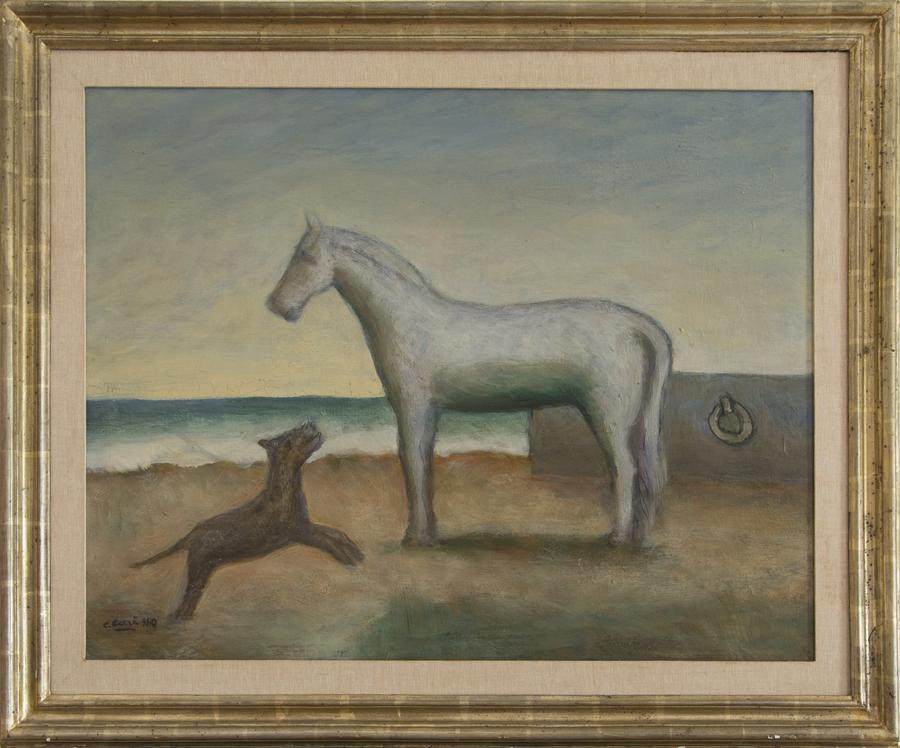Cavallo e cane, 1940
Carlo Carrà (Quargnento 1881 – Milan 1966)
Cavallo e cane
oil on canvas
1940
cm 75 x 95
The horse and the puppy are trapped in a poem of sculpted purity that recalls the purity of soul of infancy, as if they were toys handled by a kid. The space is constructed in a simplistic manner using four layers: beach, sea, sky and wall.
Carlo Carrà was among the individuals who best reflected the Italian art of the early 20th century. The painter was an adherent first of Futurism, then of metaphysical art, without ever being pigeon-holed as a member of any one movement. Equally vital for the development of his artistic language were his studies of the Tuscan masters, such as Giotto and Paolo Uccello.
Still in his youth, he moved to Milan, where he could visit the museums and broaden his artistic horizons. Also important were his many trips to Paris, the artistic Mecca of his day, where he was able to build relationships with the cubists and soak up the prevailing intellectual environment.
An art critic as well as a painter, Carrà collaborated with various magazines, among them Lacerba, L’Ambrosiano and Valori Plastici.
Starting in the mid-1920s, he developed a particular interest in the Tuscan landscape: he introduced the motif of the beaches, the beach-huts and the bathers. In the 1930s, he alternated between painting on easels, large compositions and mural paintings.
From 1939 to 1951, Carrà was also a lecturer at the Accademia di Belle Arti in Brera.
He had a unique gift for interpreting and condensing the motifs and core principles of the movements in which he participated. The artist immediately demonstrated a certain intuition when it came to the latest and most contemporary artistic styles of the early 20th century, without ever forsaking his own, individual and original form of artistic expression.
